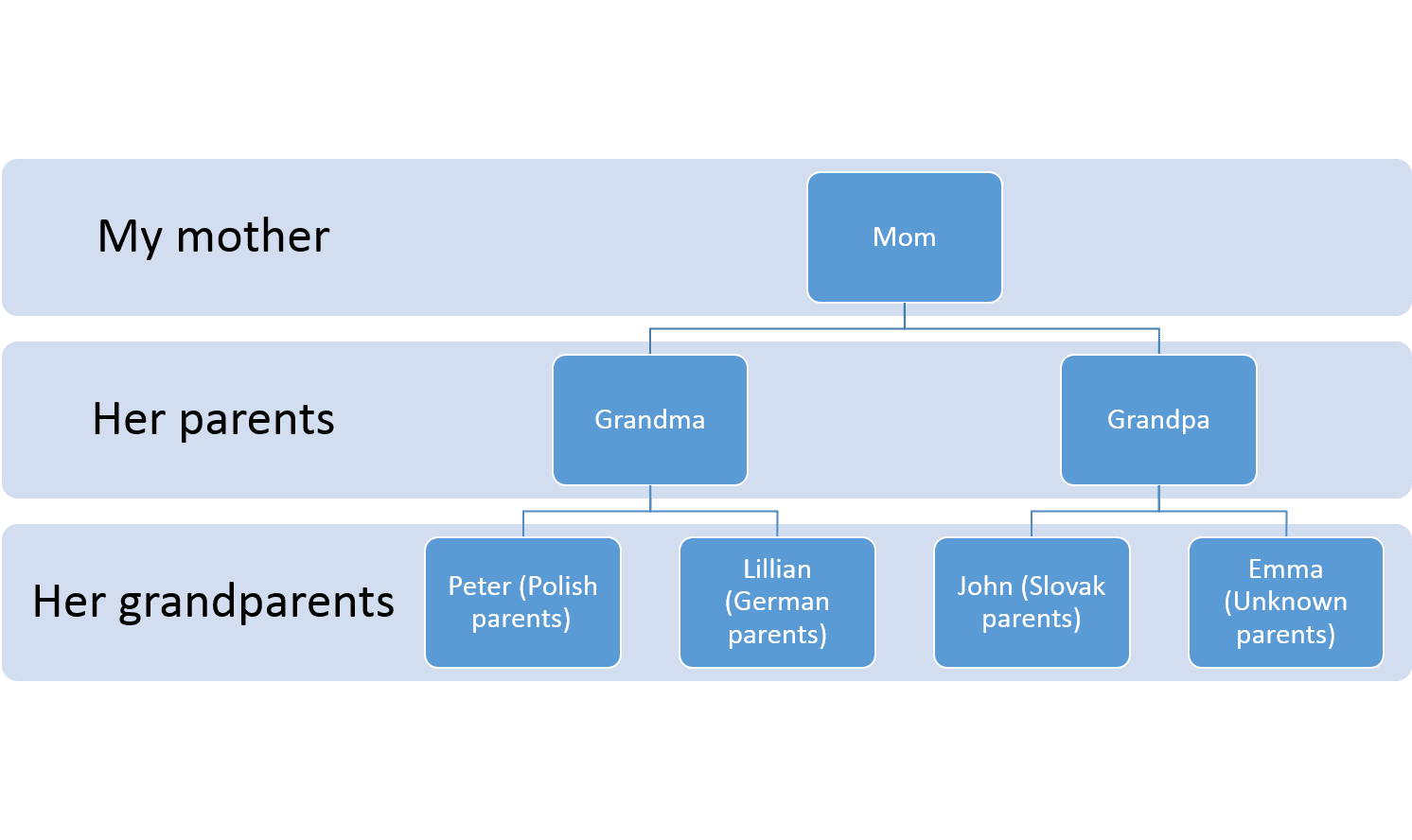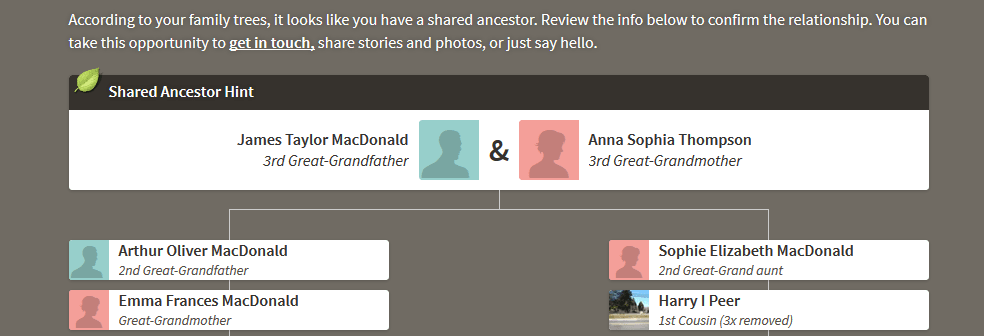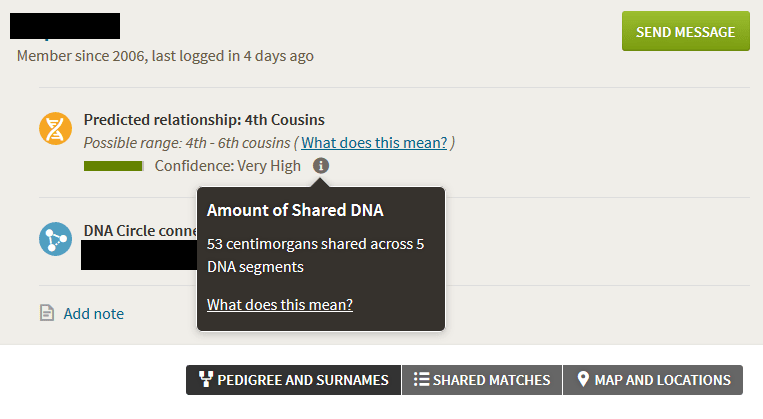Have you ever wondered whether DNA can help you with genealogy? While most people test their DNA to find out their ethnicity, not everyone realizes that they can use their DNA results to build a great family tree using the power of DNA matching technology.
In this post, I'll show you how I used DNA to build my tree, and how it helped my mother learn about her grandmother's biological family.
DNA for genealogy: Start with what you do know
The image below is all that I knew when I started building my family tree. I had dates of birth and death only from my mother's parents, and approximate dates of birth/death for my mother's grandparents:

DNA results are an amazing tool that can really help take your family tree research to the next level. When I first started out, I knew very little about my mom's side of the family. I knew the first names of my mother's grandparents, and the last names of the men.names.
DNA testing can help you learn about your male and female ancestors
It always seems to me that family tree research is very focused on the male line, maybe because of surnames. In my family, people always talked about where my grandmother's father's surname came from (Poland), or where my grandfather's father's surname came from (Slovakia).
I was frustrated with the idea that my grandmothers somehow were not important to understand and to learn about.
Why was their contribution to who I am, to my genetic makeup, unimportant?
This is why I began my foray into genealogy with my mother's father's mother (my great-grandmother), Emma. I wanted to know who she was, and where she came from. While I could not know her personally, maybe I could pay tribute to her by learning as much as I could about her.
I started my tree on Ancestry, and got a trial membership so that I could easily explore records and add information to my tree. I'll write another post about this aspect of research soon, but here I will just summarize: I was able to go through census and death records in order to make an educated guess about who Emma's parents were.
Her last name was MacDonald - a very common surname. I settled on a man and a woman that I was felt could be Emma's parents, based on geographic location and census records.
Using these names, I was able to easily learn, both from census records and other Ancestry family trees, who Emma's grandparents and great-grandparents were, assuming that I had "chosen" the right Emma MacDonald to research. This is where DNA gets very helpful!
How DNA helped me build my family tree further back
Next, I did the Ancestry DNA test. I didn't really do the test understanding how it would help me with my research, but I was amazed about what happened next!
Before I got my results, I was still feeling unsure about the folks who I thought were Emma's parents. But when I got my Ancestry test back, I saw something called "Shared Ancestor Hints", and cousin matches who had public family trees.
Sure enough, I had been right! I had at least 4 2-4th cousins who shared these EXACT ancestors in their trees! It was the most amazing confirmation, and it was beautiful to share the information with my mother, who hadn't ever known anything about her grandmother other than her name.
This is what a "Shared Ancestor Hint" looks like - this is the one that I saw for my great-grandmother's father and grandparents.

The DNA test results, along with more "traditional" research, has helped me continue to build out my great-grandmother's family tree. I have been able to trace her line all the way back to colonial times in the U.S.
This was especially interesting, since I had always believed that all of my mother's grandparents were children of recent immigrants. It turned out not to be the case at all!
One particular DNA match - my closest MacDonald relation - has the same couple in their tree. According to Ancestry, we are 3rd cousins once-removed, although they are in the 4th cousin category on my list of matches. Ancestry can also tell me how many centimorgans we share (cms - just a way to measure DNA):

It turns out that 53 centimorgans across 5 DNA segments is almost exactly the average amount of DNA shared between two cousins at this relationship distance. Further proof that my educated guesses, combined with a little hunting and pecking on the keyboard, were correct. I was now 100% sure!
I could go on and on all day about all of the new discoveries that I made, but I think this is a perfect example of how DNA can help you figure out where you come from and break through some of those "brick walls" in your family tree - especially the more recent ones.
Are you ready to use your DNA for genealogy?
If you are ready to get started on your DNA adventure (trust me - it WILL be an adventure!), you might be interested in learning about my Ultimate DNA Testing Strategy, which can help you figure out which DNA test to take and some ways to get the most out of your DNA testing dollar. It's the best strategy out there, I promise 🙂
Conclusion
I hope that this post helped you understand a little bit about how a DNA test can help you get started building your family tree. I love using DNA for genealogy. In fact, it has become quite the hobby for me, much to my surprise.
If you have any questions about something that you read in this post, or have a specific question about how DNA testing might be able to help you in your genealogy research, I would love to hear from you in the comments below.
Thanks for stopping by today!

